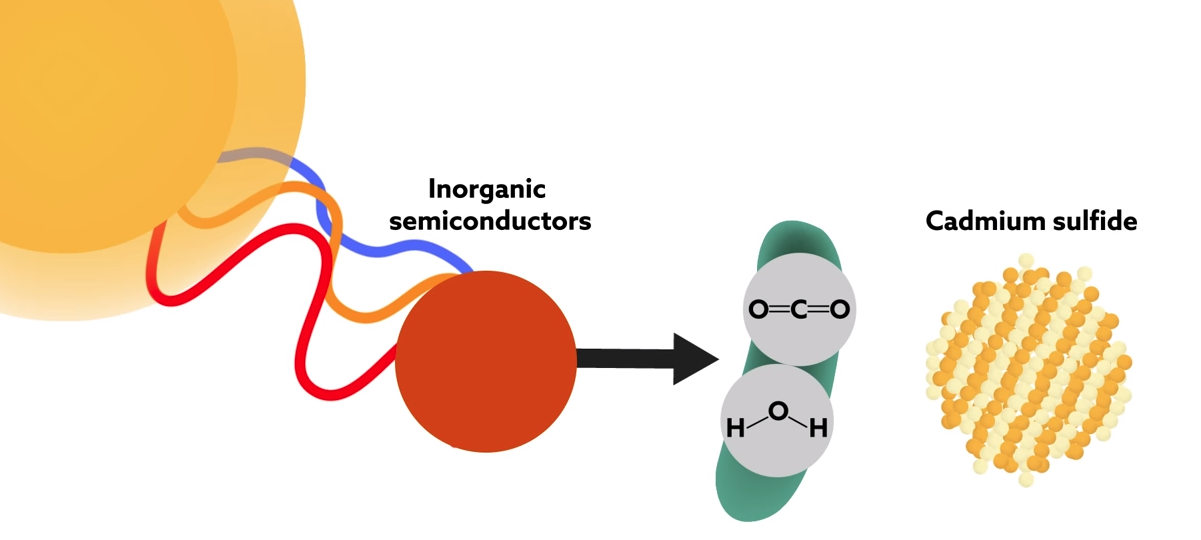
By Brian Santo, contributing writer
You could read nothing but science fiction for decades and still never come across the term “cyborg bacteria.” And now cyborg bacteria are a real thing. Scientists have attached non-organic light-converting semiconductors to decidedly organic bacteria to create a hybrid organism that converts solar energy to chemical energy effectively enough to encourage further exploration of the technique.
The conversion of light to energy is common in nature and is now common in technology. The natural world has photosynthesis, which is far less efficient than one might guess. The conversion efficiency of photosynthesis ranges from about 3% to 6%; the theoretical maximum is somewhere around 10%. Commercial solar panels now commonly exceed 20% efficiency; experimental panels are at 26.3% ; the theoretical maximum is 29%.
Photosynthetic plants and solar panels have a common limiting factor. Neither makes use of all the light available. There’s a desire to find a cheaper, more efficient alternative to fossil fuels.
Researchers from UC Berkeley and Lawrence Berkeley National Laboratory thought to explore the idea of finding cheap inorganic materials that are better at harvesting light and marrying them to an organism that could then make efficient use of that light.
They chose cadmium sulfide, a semiconductor, and created nanoparticles that they combined with Moorella thermoacetica , a common bacterium well known to be acetogenic. It’s one of the acetogens that breathes in carbon dioxide and converts it to acetic acid.
“Biologically precipitated cadmium sulfide nanoparticles served as the light harvester to sustain cellular metabolism,” reported the researchers in the summary of their paper . “This self-augmented biological system selectively produced acetic acid continuously over several days of light-dark cycles at relatively high quantum yields, demonstrating a self-replicating route toward solar-to-chemical carbon dioxide reduction.”
The combination has an energy conversion efficiency of 80%, which is incredibly encouraging.
Results so far suggest that the choice of bacteria was a good one. Moorella thermoacetica reproduces well, and the product of its respiration, acetic acid, can be used to make a number of fuels, polymers, pharmaceuticals, and commodity chemicals through complementary, genetically engineered bacteria, according to an account of the technique published by the American Chemical Society (ACS ).
The cyborg version of the bacterium is easy to make; just add cadmium and cysteine (an amino acid that contains sulfur), and the bacterium naturally makes its own cadmium sulfide. The researchers call their creation “thermoacetica-CdS.”
In short, the process is self-replicating, self-regenerating, and zero-waste. It’s almost everything that one could hope for — almost. Cadmium sulfide is toxic.
Researchers are now trying to identify another semiconductor that might work as well.
One of the lead authors of the paper, Kelsey Sakimoto, is now at Harvard University. In an email exchange, he toldElectronic Products, “There is indeed current work exploring other materials for these cyborg bacteria. Other metal sulfides, such as lead sulfide (PbS), seem promising as they can absorb more light, but it is still early days on these new directions.”
Advertisement
Learn more about Electronic Products Magazine





